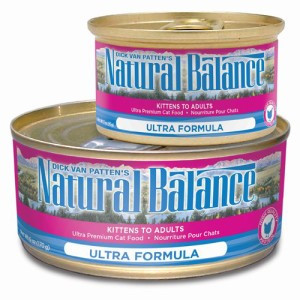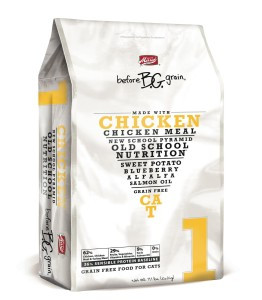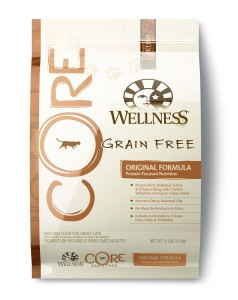For cat lovers, ensuring our feline friends are happy and healthy is a top priority. And it all starts with their diet. Walking down the pet food aisle can be overwhelming, with countless brands promising the best for your cat. But does quality cat food have to break the bank? The truth is, navigating the world of cat food can feel like a minefield, especially when big brands bombard us with ads that often prioritize profit over our cat’s well-being.
I understand the frustration. Like many of you, I’ve been through the heartbreak of losing a pet too soon, a loss that sparked a deep dive into the pet food industry and its hidden truths. The journey led me to uncover some unsettling realities about what goes into many commercial cat foods, and more importantly, what truly constitutes a healthy diet for our carnivorous companions.
This guide is designed to cut through the marketing jargon and provide you with the essential knowledge to choose the Best Affordable Cat Food for your beloved cat. We’ll explore key ingredients to look for, what to avoid, and highlight budget-friendly brands that don’t compromise on quality.
Key Principles for Choosing Affordable Cat Food
Before we dive into specific brands, let’s establish some fundamental rules for selecting any cat food, especially when aiming for affordability without sacrificing quality. These principles are non-negotiable, regardless of your budget:
- Prioritize Protein: Cats are obligate carnivores. This means their bodies are designed to thrive on a diet rich in animal protein. When examining cat food labels, the first five ingredients are paramount, as they make up the bulk of the food. These should always be identifiable protein sources.
- Look for Specific Protein Sources: “Meat by-products” might sound vague and inexpensive, and that’s because they often are. Ideally, you want to see named meat sources like “chicken,” “turkey,” “salmon,” or “beef” listed first. By-products, while not inherently harmful, can be of variable quality and less digestible.
- Limit Carbohydrates: Cats in the wild consume minimal carbohydrates. Many affordable cat foods are loaded with grains, potatoes, and other fillers to reduce costs. While a small amount of carbs isn’t detrimental, excessive amounts can lead to health issues over time. Aim for lower carbohydrate content, ideally under 10% of calories. Grain-free options are often better, but check the ingredient list – grain-free doesn’t automatically mean low-carb.
- Wet Food is Generally Superior: While dry food is often cheaper and more convenient, wet food is typically a healthier option for cats. Dry food is heavily processed, often higher in carbohydrates, and critically, very low in moisture. Cats have a low thirst drive and naturally get much of their hydration from their food. A diet primarily of dry food can contribute to dehydration and urinary tract problems.
Considerations for Cats with Kidney Issues
It’s important to briefly touch upon cats with Chronic Kidney Disease (CKD), as it’s a common concern, especially in older cats. While this guide focuses on best affordable cat food for healthy cats, understanding CKD diets is crucial for many owners.
Contrary to outdated beliefs, protein is not the enemy for cats with kidney disease. In fact, cats still need high protein, even with compromised kidneys. Dr. Lisa Pierson from Catinfo.org, a leading expert in feline nutrition, emphasizes that reducing protein drastically is detrimental. Instead, focus on:
- Moderate Protein: A slight reduction from a very high protein diet (60%+) to around 40% protein is sufficient for CKD cats.
- Low Phosphorus: Phosphorus control is key in managing CKD. Aim for foods with phosphorus levels under 250mg per 100 kcals, or 0.3 – 0.6% on a dry matter basis.
- High Fat, Low Carb: The remaining calories should come from healthy fats, keeping carbohydrates as low as possible.
- Omega-3 Supplementation: Omega-3 fatty acids, like those found in salmon oil, are beneficial for kidney health.
For a detailed list of wet cat foods suitable for cats with CKD, Dr. Pierson’s cat food chart is an invaluable resource. It breaks down protein, fat, carbohydrate, and phosphorus levels for numerous brands.
Best Affordable Wet Cat Food Options
Now, let’s get to the heart of the matter: finding best affordable cat food options that are both budget-friendly and nutritionally sound. Wet food is generally the better choice, so we’ll start there, exploring options that offer good value without compromising on ingredient quality.
When considering affordability, we’re looking for brands that provide a decent quality food at a reasonable price per can or ounce. Prices can fluctuate, but the brands listed below generally offer better value compared to premium or veterinary prescription diets.
Natural Balance Canned Cat Food
 Natural balance cat food
Natural balance cat food
Pros:
- Decent First 5 Ingredients (Ultra Formula): Chicken Broth, Chicken, Chicken Liver, Salmon, Duck. These are good quality animal protein sources.
- Availability: Widely available in pet stores and online.
- Price: Generally in the lower to mid-range price bracket for wet cat food.
Cons:
- Not Grain-Free: Contains grains, which are not ideal but acceptable for many cats if the protein content is high and the price is right.
- Ingredient Quality (Varies by Formula): Stick to formulas with named meat sources at the top of the ingredient list.
Price Range: Approximately $30-35 for 24 6-oz cans (prices may vary).
Newman’s Own Canned Cat Food
Pros:
- Organic Chicken: Starts with organic chicken, a good quality protein source.
- Grain-Free Options Available: Offers grain-free formulas, catering to cats with sensitivities or those on grain-free diets.
- Price: Competitively priced, often similar to or slightly cheaper than Natural Balance.
Cons:
- Fish Content: Some formulas contain “Ocean Whitefish,” which can be a source of mercury and toxins if not sourced carefully. Variety is good, but be mindful of fish-heavy diets.
- Ingredient Quality (Varies by Formula): As with any brand, ingredient quality can vary across different formulas. Check labels.
Price Range: Approximately $25-30 for 24 6-oz cans (prices may vary).
Sheba Perfect Portions Pate
Pros:
- Portioned Trays: Convenient pre-portioned trays minimize waste and ensure freshness.
- Grain-Free: Pate formulas are grain-free.
- Palatability: Often appealing to picky eaters.
- Affordable: Generally one of the more budget-friendly wet food options.
Cons:
- Ingredient Quality (Lower): Ingredients like “Meat By-Products” and vague descriptors are less desirable. While grain-free, the overall protein quality is not as high as other brands.
- Smaller Cans: 3-oz portions might require multiple trays for larger or multi-cat households.
Price Range: Approximately $32 for 24 3-oz servings (prices may vary).
Important Note: While Sheba is listed here for affordability, it’s crucial to acknowledge that ingredient quality is not its strongest point. It can be a budget-friendly option, but for long-term health, prioritizing slightly higher quality brands when possible is recommended.
Affordable Dry Cat Food Choices
While wet food is generally better, dry food can be a more budget-friendly and convenient option for many cat owners. If you choose dry food, it’s even more critical to select wisely and ensure your cat stays well-hydrated.
Merrick Before Grain Dry Cat Food
 Merrick before grain
Merrick before grain
Pros:
- Good First 5 Ingredients: Deboned Chicken, Chicken Meal, Potato Dehydrated, Turkey Meal, Chicken Fat. Focuses on animal protein sources.
- Grain-Free: Formulated without grains.
- Availability: Widely available.
- Price: Mid-range price point for grain-free dry food, offering good value.
Cons:
- Potato Content: Contains potato, a carbohydrate source that cats don’t require in large amounts.
- Plant-Based Protein (Peas in some formulas): Some formulas may include pea protein, which is less biologically appropriate for cats than animal protein. Check ingredient lists carefully.
Price Range: Approximately $35 for an 11-lb bag (prices may vary).
Wellness Core Dry Cat Food
 Wellness core cat food
Wellness core cat food
Pros:
- Strong Animal Protein Focus: Historically known for high-quality animal protein content.
- Grain-Free: Core line is grain-free.
Cons:
- Formula Changes: Recent formula changes have included peas higher in the ingredient list, slightly reducing the overall protein quality and increasing carbohydrate content compared to previous formulations.
- Price Increase/Bag Size Reduction: Bag sizes have decreased while prices have remained similar or increased, impacting affordability per pound.
Price Range: Approximately $40-50 for a 15-lb equivalent bag (prices may vary and depend on bag size).
Important Note: Due to formula changes, Wellness Core is no longer as highly recommended as it once was. It’s still a better option than many mainstream brands, but ingredient quality has shifted.
Ingredients to Steer Clear Of
Regardless of your budget, certain ingredients should be avoided in cat food whenever possible. These are often fillers, low-quality protein sources, or potentially harmful additives that can compromise your cat’s health over time.
Absolutely Avoid:
- Corn, Corn Meal, Corn Gluten: Cheap fillers with minimal nutritional value for cats. Can contribute to allergies and digestive issues.
- Soy: Another inexpensive filler protein source, common allergen for pets.
- Wheat and Wheat Gluten: More cheap fillers, also potential allergens.
- Cellulose/Powdered Cellulose: Pure, indigestible filler with no nutritional benefit.
- By-products (Unspecified): “Meat by-products” without specifying the animal source can be of questionable quality.
- Artificial Colors, Flavors, and Preservatives (BHA, BHT, Ethoxyquin): Unnecessary additives that can be harmful to long-term health.
Why Quality Cat Food Matters (Especially for Your Wallet)
It might seem counterintuitive, but investing in slightly better quality, affordable cat food can actually save you money in the long run. While cheaper, lower-quality foods may have a lower upfront cost, they can contribute to health problems that lead to expensive veterinary bills down the road.
Feeding your cat a diet that is biologically appropriate – high in animal protein, low in carbohydrates, and free of harmful fillers – can help prevent a range of health issues, including:
- Digestive Problems: Diarrhea, vomiting, Inflammatory Bowel Disease (IBD).
- Skin Allergies and Itching.
- Feline Diabetes.
- Urinary Tract Issues: Crystals, bladder stones, cystitis.
- Chronic Kidney Disease (CKD).
- Obesity and related problems.
By choosing a best affordable cat food option that prioritizes quality ingredients, you’re investing in your cat’s long-term health and well-being, potentially reducing the need for costly vet visits and medications later in life.
Read On for More Cat Health Insights
Nutrition is just one piece of the puzzle when it comes to keeping your cat healthy and happy. Explore these related articles for more valuable information:
- How to Help Your Cats Live Longer: Discover more ways to extend your cat’s lifespan and improve their quality of life.
- Cat Treats: What to Indulge, What to Avoid: Learn how to choose healthy and safe treats for your feline friend.
- Cat Vertical Space 101: The Ultimate Guide: Understand the importance of vertical space for cat well-being and how to create a cat-friendly environment.
What do you feed your cat? Have you found any other best affordable cat food brands that deserve to be on this list? Share your recommendations in the comments below!
Pin it!
More cat hair for your sweater >>
Tags: Food, Health Concerns
